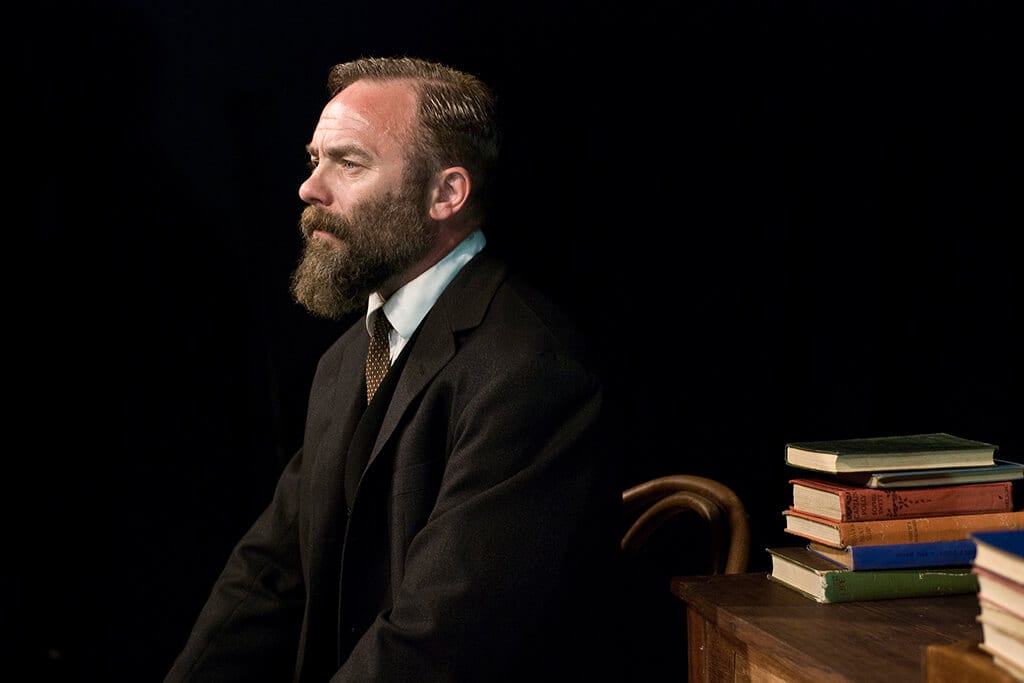Phoenix Rising: The Young D. H. Lawrence originally came into existence in 1985, as Kay and Slack (then a young drama student) bonded over their Nottinghamshire roots and the shared heritage of D. H. Lawrence. After twenty-five years, Kay and Slack came together again to revisit the play, and it is this extended version which is now being performed as Phoenix Rising: D. H. Lawrence – Son and Lover. In the play, Lawrence receives a letter from David Chambers, the brother of Jessie (Lawrence’s friend and muse for many years, inspiring the character of Miriam in Sons and Lovers), which prompts him to reflect on his life over the years.
The set is sparse, consisting only of Lawrence’s office furniture and some books, which are used ingeniously as Lawrence recreates the world of his youth around himself – his desk becomes the kitchen table, a plough and his school desk, while the ever-present books remind us of his future as a writer, as well as the impact that words and stories had on him throughout his life. However, although the premise of the play as a trip down memory lane is well-executed, it is worth asking why the play takes this format in the first place. Perhaps in its first iteration, the one man arrangement was the most suitable, but in this version, Slack could do with someone else with whom to share the stage.
There are many emotional scenes – Lawrence and Jessie’s confrontation about marriage, for example, or his conversations with his sister about his mother’s cancer – which would be much more effective if Slack did not have to carry them alone. Slack is excellent at inhabiting other characters and jumping between them, but his anger is often unconvincing, as we can never forget that he is shouting at thin air, and although he pulls off comedic moments with aplomb, the serious scenes almost always fall somewhat short.
Soon after receiving the letter, Lawrence’s monologue changes from a response to David to his own ramblings about his past, addressed to the audience. This makes the frame feel somewhat redundant, and when we are reminded of it at the end, it is confusing rather than enlightening. The text of the play itself is clever, reflecting Lawrence’s language in his own writings, and the plot moves along at a good pace – but the allusions to popular figures in Lawrence’s time come across as somewhat heavy-handed Easter eggs, rather than accurate representations of those individuals. Although the play is enjoyable enough, it fails to offer us anything new – whether in terms of Lawrence’s life, or in the realm of drama itself.

